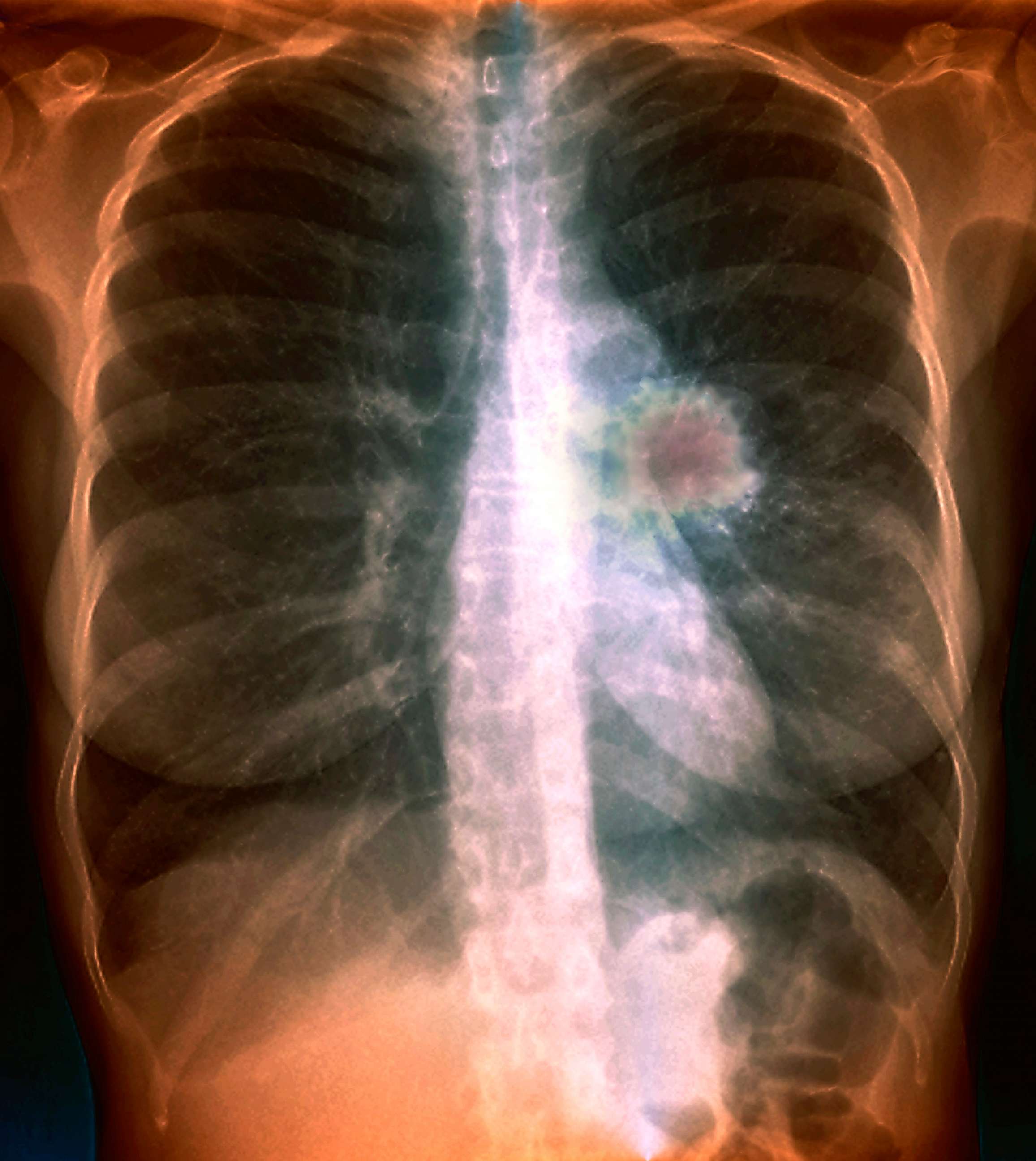Racial disparities among lung cancer diagnoses have nearly vanished, new study finds
Historically, lung cancer rates have been higher in Black people, doctors say.
A new study shows that racial disparities among new lung cancer diagnoses have nearly vanished.
Because of deeply-rooted systemic problems, Black Americans tend to experience disproportionate rates of many common illnesses. However, a recent study has found that with thoughtful and rigorous public health programs, it is possible to flatten some of this disparity. Effective education and policy around tobacco use in the Black community has likely been the reason for a notable decrease in smoking rates and subsequent new lung cancer diagnosis compared to whites, experts said.
The recent study, led by researchers at the National Cancer Institute, found that rates of new lung cancer diagnoses for Black and white men in the United States are now roughly even. The rates for Black women are lower than those for white women.
"Historically, lung cancer rates have been higher in Black men than white men at all ages," said Dr. Ahmedin Jemal, Ph.D., a cancer epidemiologist who has been studying the relationship since he was a fellow at the National Cancer Institute in the mid-1990s.
"Since the mid 20th century, lung cancer rates have been higher in Black women than white women," Jemal added.
Previous studies have shown that Black people were disproportionately stricken with the most common cause of cancer in the country, when compared to white people.
However, there has been a trend toward decreased initiation of smoking in youth since the late 1970s. Smoking patterns have shifted away from conventional cigarettes. But it's too soon to know how changes in smoking behavior, such as vaping, will affect the burden of lung disease and cancer rates in the future, according to Dr. John Brownstein, an epidemiologist at Boston Children's Hospital and an ABC News contributor.

With approximately 80% of lung cancer cases attributed to smoking, Jemal wondered how these trends have affected cases of lung cancer between Black and white people more recently. Specifically, he wanted to know how the patterns of lung cancer rates have changed over time for people aged 40 to 54.
In 2009, Jemal published a study demonstrating that lung cancer rates between Black and white women had converged -- meaning both groups were diagnosed with lung cancer at the same rate. "In men, the difference became smaller," Jemal said, but Black men still were being diagnosed with lung cancer at higher rates than their white counterparts.
Lung cancer is often a slow-growing disease and is the leading cause of cancer death in the U.S.
"It takes a long period of time to see lung cancer rates to change after widespread smoking cessation," Jemal said. Using a database of thousands of patients, across decades, he was able to track rates of smoking and rates of lung cancer diagnoses.
Jemal's follow-up study, 10 years later, revealed positive news for Black men aged 40 to 54 with lung cancer. In the data, the previous disparities were no longer evident. Black and white men were being diagnosed with lung cancer at the same rate, and the rates at which black men were being diagnosed was on a significantly steeper decline than that of white men.
"Something is working well in the African American community related to tobacco education and policy," Jemal said.
For Black men born in 1957, the lung cancer incidence was twice as high for white men, now for those born in 1972, the rate of lung cancer incidence is similar to that of white men.
Results also showed that Black women had significantly lower rates of lung cancer diagnoses than white women across all ages.
One exception to this trend was in Black men aged 30 to 39 diagnosed with lung cancer in 2012-2017. This group bucked the trend and had a higher rate of lung cancer diagnoses than older Black males. Jemal believes targeted marketing and advertising campaigns towards African Americans by tobacco companies like RJ Reynolds led to an uptick in smoking for Black teens and young men.
But just taking up smoking can't totally explain the trend, Jemal said. Studies have shown that Black people may be more susceptible to lung cancer from smoking based on their biology, such as differences in how their bodies break down chemicals in tobacco. Further studies are needed to fully understand these biological differences.
The new study had some limits. Researchers looked at smoking on a population level rather than at an individual level, and couldn't account for the differences in how much people smoked. Other exposures like pollution and secondhand smoking that may contribute less to lung cancer were not included.
The study only looked at new lung cancers diagnosed, and not at the differences in mortality in regards to race, Brownstein said. "Equitable access to care and the quality of care being delivered are important in disease outcomes" with respect to racial disparities, he said. "Hopefully future studies will highlight that."
Ultimately, Jemal said, "It's really good news in the middle of all this bad news" regarding current race disparities in health care.
Molly Stout, M.D., a dermatology resident at Northwestern in Chicago, is a contributor to the ABC News Medical Unit.



